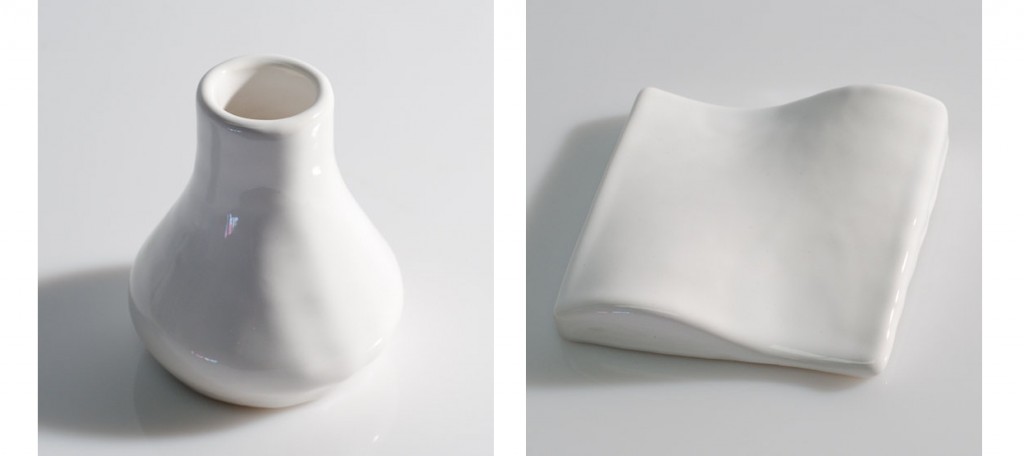
3D printing with your Personal Factory just got food safe
We are psyched to announce our 8th material available for 3D printing — Glazed Ceramic!
Glazed Ceramic lets you create 3D printed ceramic objects which go through a fire and glazing process just like traditional ceramics.
The finish is a lovely smooth gloss, and objects made with Glazed Ceramic are food safe and heat resistant.
Samples for this material are still in the kiln, so to speak, but we’ll let you know as soon as they’re are available for $13.50 each!
And in October, the guys of FabBlab are doing a special Halloween themed Glazed Ceramic project. So you’ll be able to download their free file and make a 3D printed ceramic object even if you don’t have the skills to design in 3D just yet.
Speaking of designing in 3D, designing for Glazed Ceramic does take some special considerations. Think of working with 3D printed Glazed Ceramic with the same expectations of hand-made ceramics.
Ceramics go through a lot — 3 rounds of firing and a glazing stage. And change happens with each stage; so avoid rigid, geometric, or highly detailed designs. Ceramics are fragile; so your design must be strong and stable enough to be fired in the kiln. Ceramics are also unpredictable, which is part of their charm. So don’t expect a verbatim replica of your 3D model.
Durability
Your design must be structurally durable so that it can be hardened in the firing process. The recommended minimum wall thickness is 3mm.
The high heat can also cause your design to warp as it hardens, so softer organic shapes are much more suitable than geometric shapes. Note how the geometric design below turned out a little bloated.
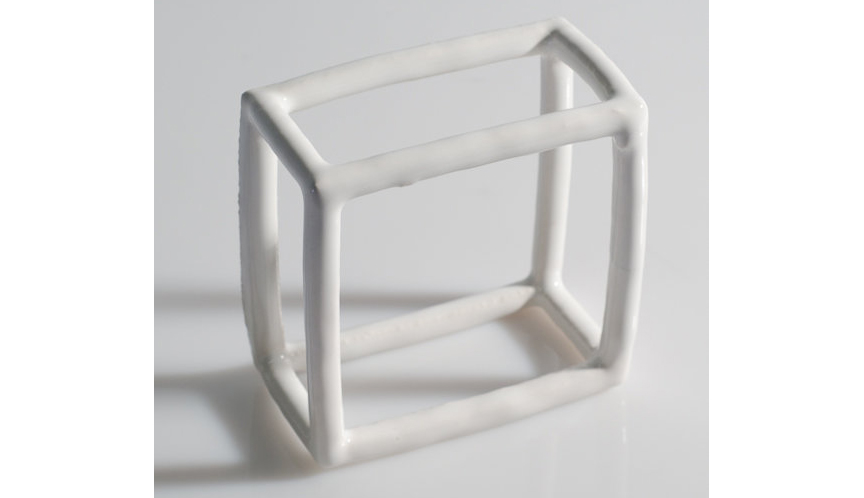
Detail
Detail is another thing to carefully consider. In addition to warping in the kiln, the glaze can add 1mm of material to the surface, smoothing over any surface details in your design. Note how the text is obscured in the examples below.
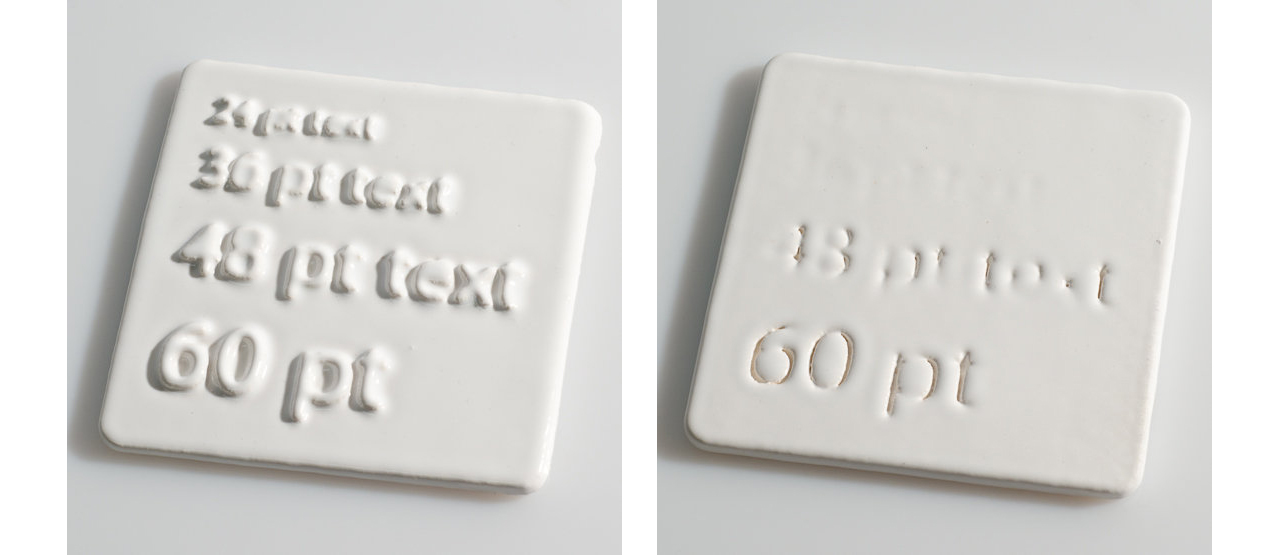
The glazing stage
The glazing process requires one other consideration as you design. The glaze is sprayed on, and your design must have an obvious base on which to sit. If there is no obvious base, your design will be propped on pins which will leave dimples in the glaze.
Also, only the appropriately glazed parts of your design are food safe.
Pricing
Pricing for this material starts at an affordable $0.20/cm2 for free Personal Factory accounts and $0.18/cm2 for Prime. Pricing is in cm2 instead of cm3, because pricing is based on the surface area of your design.
Creating 3D printed ceramic objects is both a mechanical and an organic process. Design with both in mind, and this may just be your new favorite material. See the complete guide to designing for Glazed Ceramic.
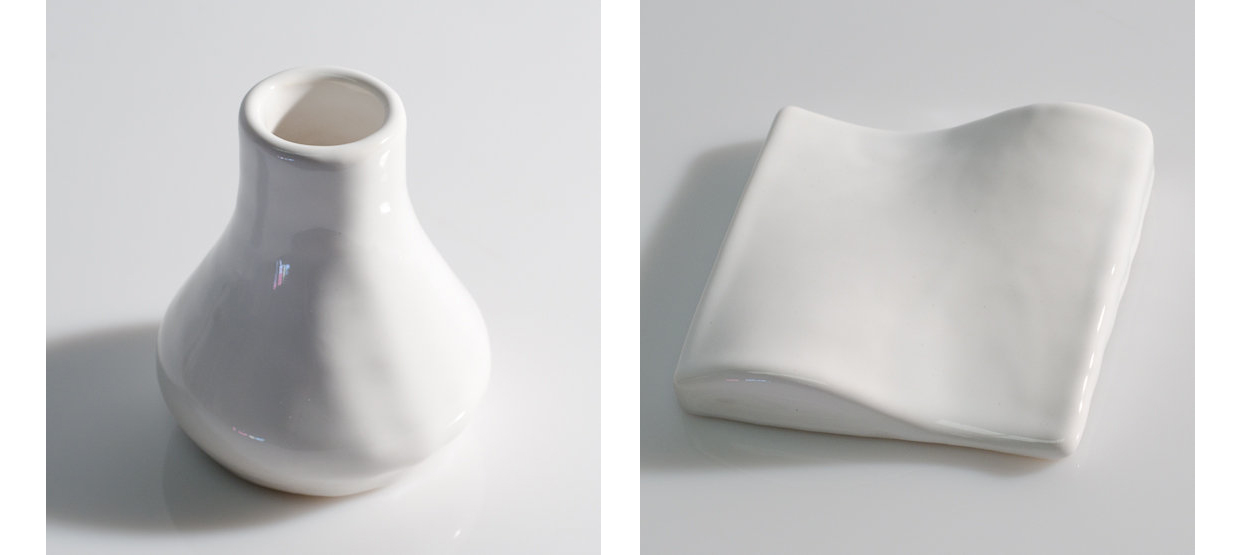

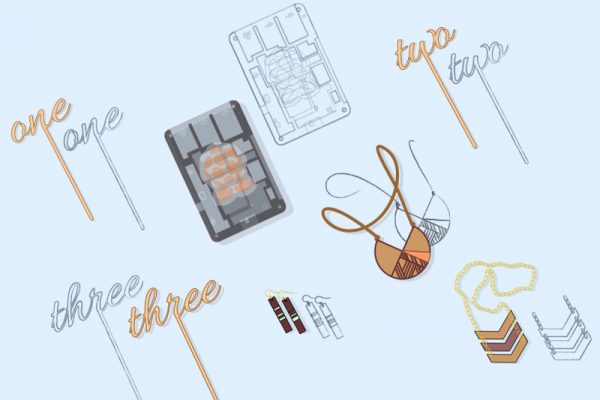
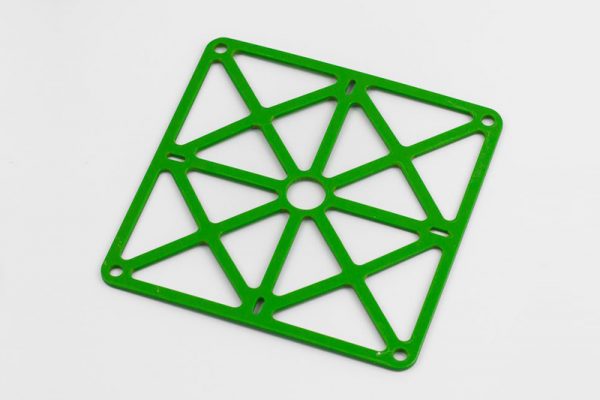
5 Comments
I have just almost made a mess of my pants!
I think of all the materials that Ponoko has offered, this is the most exciting for me.
Excited to play with this new material, though I need to ask.. can we paint over the glaze?
This is awesome! Can you supply a reference for the glaze, or a pointer to the MSDS? How well does your glazing process work on the inside of vessels? Are you dipping or spraying? Can we order things bisque fired but unglazed for multi-color glazing at home? Ceramics nerds want to know!
what is the weight of this material?
@ Oscelot – You can over-glaze the parts as with any other glazed object. The main thing to consider would be the temperature you fire the over-glaze. It would need to be a lower temperature glaze than the white glaze we put on. I’ll find out the temps of that and post it to the material page.
@ Steve W – I’m tracking down the technical documentation for the glaze.
The glaze is sprayed on and the get reasonable coverage on the insides of vessels. You do need to leave a good sized hole for the fabber to get the spray equipment into though. The vase shown on the product page has a 25mm/1″ hole and the inside has been completely coated even with the side of the vase cutting away from the opening. It’s not quite as thick or even as the outside but still impressive. All the internal wall have line of sight from the opening though.
Potentially we can look at offering sealed but unglazed parts for you to glaze at home. We’ll add this as demand dictates. Send an email to service at ponoko dot com to register your interest.
@ Flammpunkt – I’m tracking down the technical documentation for this material. I’m guessing the answer wont be straight forward as weight will depend on the surface area geometry and how much glaze is applied.
Comments are closed.